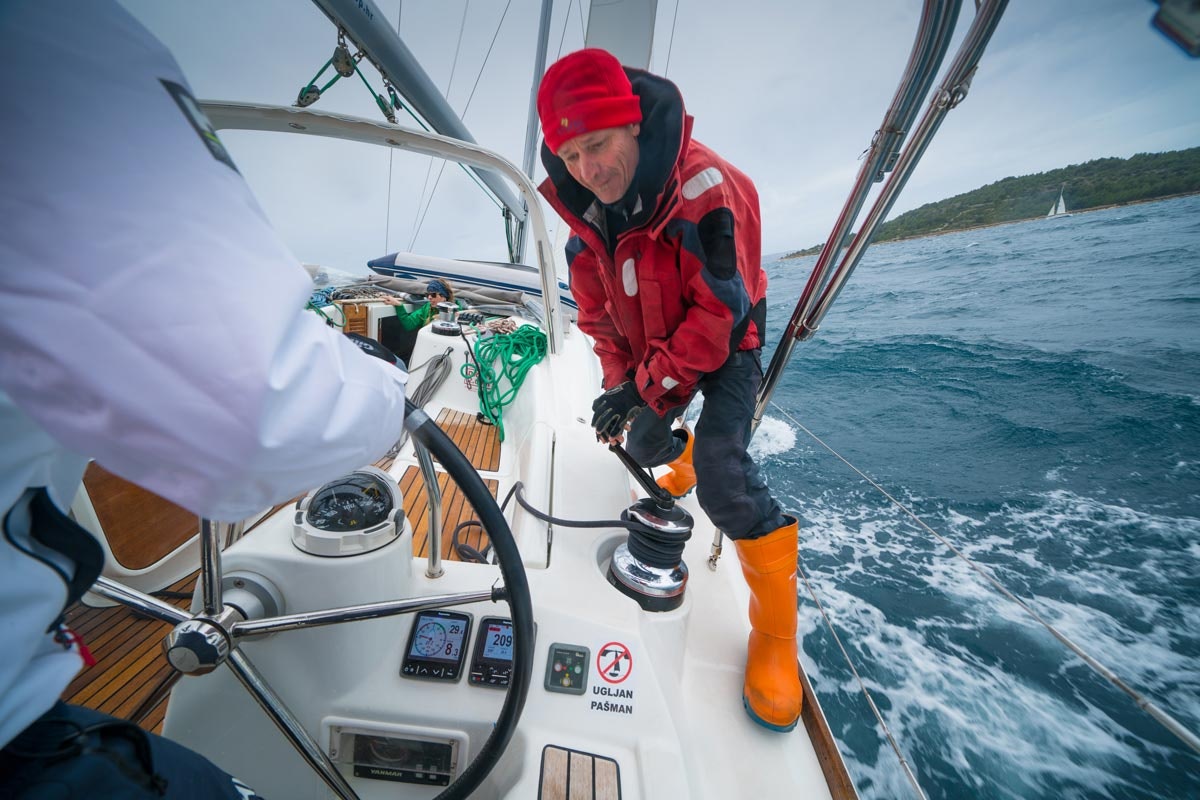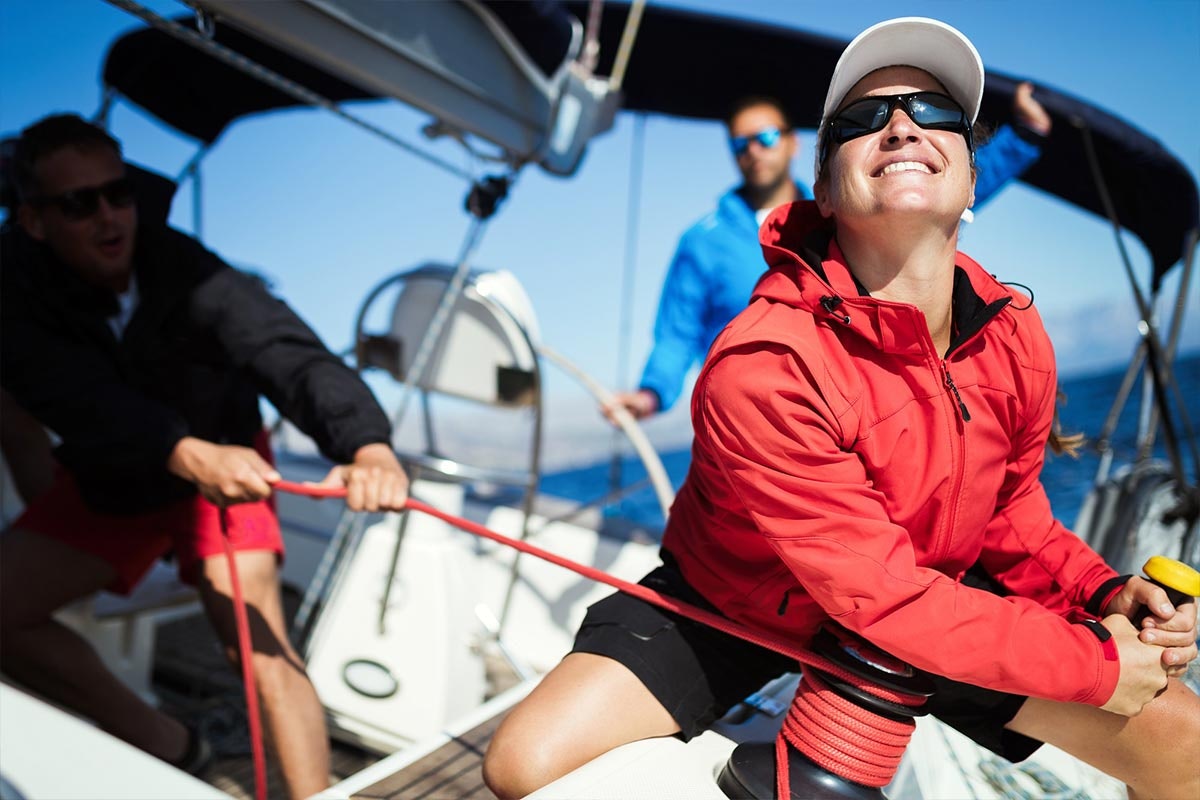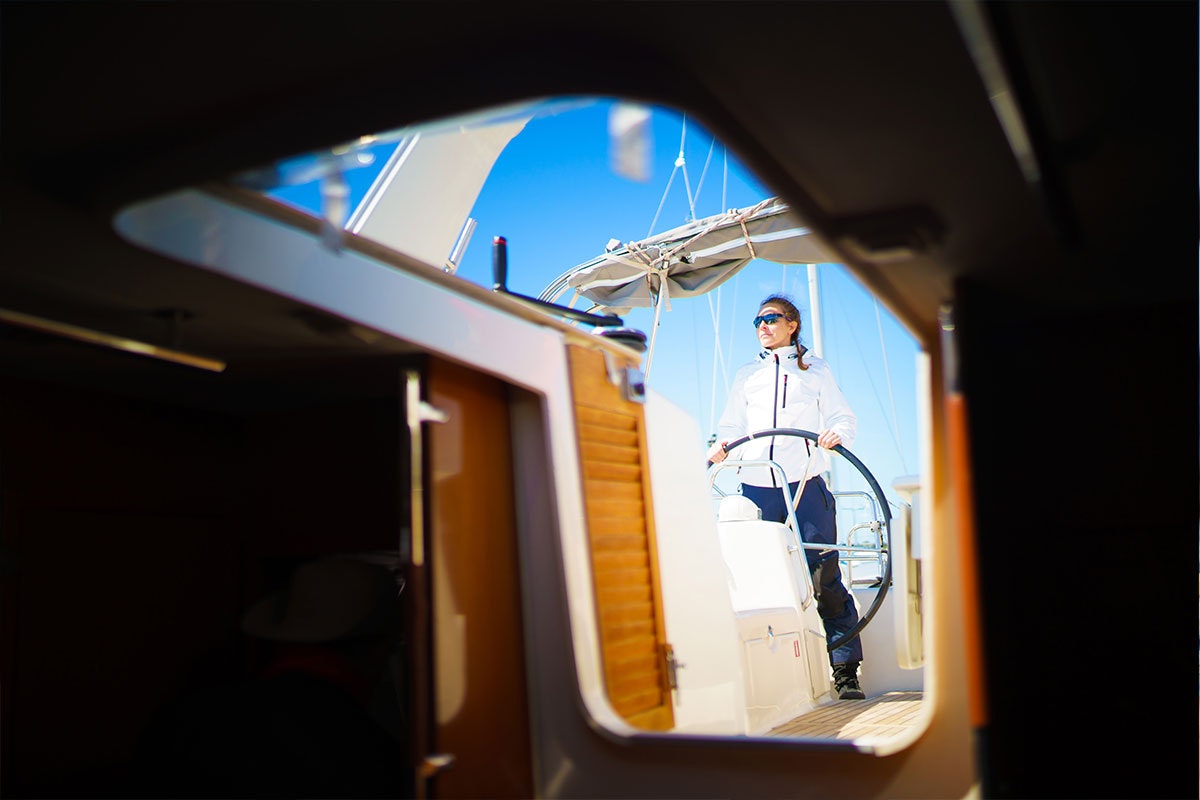Autumn holidays on a boat can be equally enjoyed by competitive sailors and those who prefer leisurely cruising with the occasional swim. The sun is shining, the sea is still warm, the harbours and towns are emptying out and the wind is already hitting the sails hard. Unfortunately, the weather conditions might not play out exactly as you imagined. But don't worry, if you're well prepared, you can still make the most of your sailing holiday. We've got some terrific advice to help you get through it without a hitch.
What to pack on your autumn sailing trip: a checklist
Whether you're purposely seeking out larger waves and windy weather or big storms appears out of the blue, it is good to be prepared. Although luck may be on your side and you’ll have beautiful summer weather, it’s better to be safe than sorry,
Functional base layer
A single thick layer of clothing is neither practical nor comfortable. It’s always best to wear several thinner layers on top of each other. High-quality functional undergarments are definitely worth it. The weather conditions change fast in autumn — bright sunny weather with summer temperatures can swiftly deteriorate into cloudy skies and temperatures below 10 °C. It’s important also to keep the wind chill factor in mind.
Waterproof windbreaker with hood and waterproof trousers
Don’t worry, you don’t have to buy any traditional yellow rain gear, but you will definitely appreciate having good waterproof clothing in autumn. In an emergency, a windbreaker combined with a raincoat (cycling or fishing) or high-quality Gore-Tex will do the job. Be sure not to forget waterproof trousers. Greater winds bring more spray and showers on board so cover your whole body to protect it against water and wind. It’s not much fun getting soaked through in a gusty wind first thing in the morning.

Clear safety glasses
In order to keep the rain and water spray out of their eyes, take at least one pair of safety glasses for the person at the helm. You can get them cheaply at every craft store.
Medication for nausea and motion sickness
When the boat begins to rock, nausea can set in even for the most experienced of sailors. Kinedryl, homeopathic Coculline, Travel-Gum gum or patches have all been proven to work. It’s also worth trying candied ginger or ginger tea, acupressure or acupuncture.
When seasickness strikes, remember the traditional advice — focus on a fixed point (horizon or island), don’t stay below deck but in the fresh air, keep the stomach half-full, find the place where the boat sways the least, lie down, do not look through binoculars and don’t inhale any diesel fumes.
Or find some inspiration in the wisdom of old sea dogs and beat sea sickness by wearing a gold ring in your ear. This essential prop for every swashbuckling pirate actually worked on the principle of acupuncture. Or perhaps you’d prefer an eye patch? If you give it a try, let us know if it works!
YACHTING.COM TIP: Getting seasick is not only a major worry for novice sailors, but also for holidaymakers on a boat trip. But the truth is, it even can affect experienced sailors from time to time. Those with darker humour say it has two phases — in the first phase you become so sick you're afraid you're dying, and in the second, you're afraid you're not going to. The important thing, though, is to understand why it happens and try to prevent it. To find out what work' best, check out our guide on How to cope with seasickness
Read about the weather you may encounter at sea:

Wetsuit
The sea may already be cooler in autumn or you could get frozen to the bone in the wind. And diving into the clear blue sea is such a temptation. Neoprene provides you with good thermal comfort.
Sunglasses and sunscreen
At sea, the sun can still be powerful enough to burn you or irritate your eyes.
Wetsuit boots or sailing boots
Prevents slipping over and injury.
YACHTING.COM TIP: Whether you're enjoying a leisurely sailing holiday or competing in a yacht race, you should always wear appropriate footwear. If you plan on spending your summer vacation exploring Croatia on a yacht, most of your time will be spent in sneakers or boat shoes. But in harsher conditions, waterproof boots or wetsuit boots will keep your feet warm and dry. And non-slip soles are essential. So, how do you choose the right sailing shoes or boots? — find out in our article Stepping out to sea: choosing the right sailing shoes.

Cap
Protects the head and prevents heat loss. Choose a cap made of functional materials and choose one that can be easily covered by the hood of a windbreaker or raincoat.
Waterproof case
In warmer weather, every day it is either wet or humid on board.
YACHTING.COM TIP: If you're planning a sailing trip, check out our other articles for a more detailed yacht packing list, or some essential pieces of kit recommended by experienced sailors.
5 guidelines for yachting in poor weather conditions
Prolonged bad weather brings uncertainty, the mood deteriorates and decision-making becomes more difficult. Under such circumstances, mistakes are easily made. Let’s go over a few principles that will improve your sailing experience.
- Prepare for bad weather in advance. Keep some ports of call as a backup where you can take shelter, be aware of what the sea bed, rocks and coastline look like (make sure you have a “Plan B” if the GPS navigation doesn’t work).
- Check your rescue gear. Have you got all the life jackets, harnesses and know their condition and location? When you need them, you don’t want to waste time searching for them.
- Prepare the crew for more difficult situations. Strong winds and high waves on a yacht can easily lead wreak havoc on a sailboat, especially if the crew isn’t that experienced. Explain and train
- Track wind changes and weather forecasts. Leave plenty of time to prepare the sails, slow the boat and keep the situation under control.
- If the weather deteriorates significantly or you just don’t feel like sailing anymore, retreat to a sheltered harbour in good time.
Also, check out what our experienced skipper, Pavel Kocych, has to say. He advises how to prepare your boat for a stormy night, including numerous tips you will definitely appreciate in bad weather.

